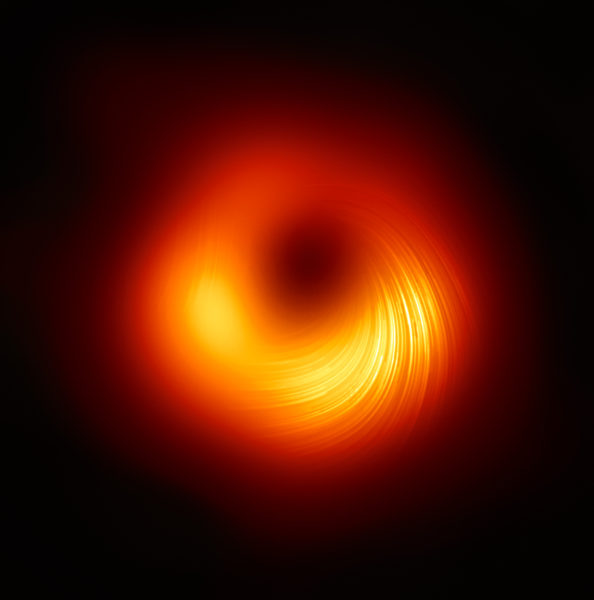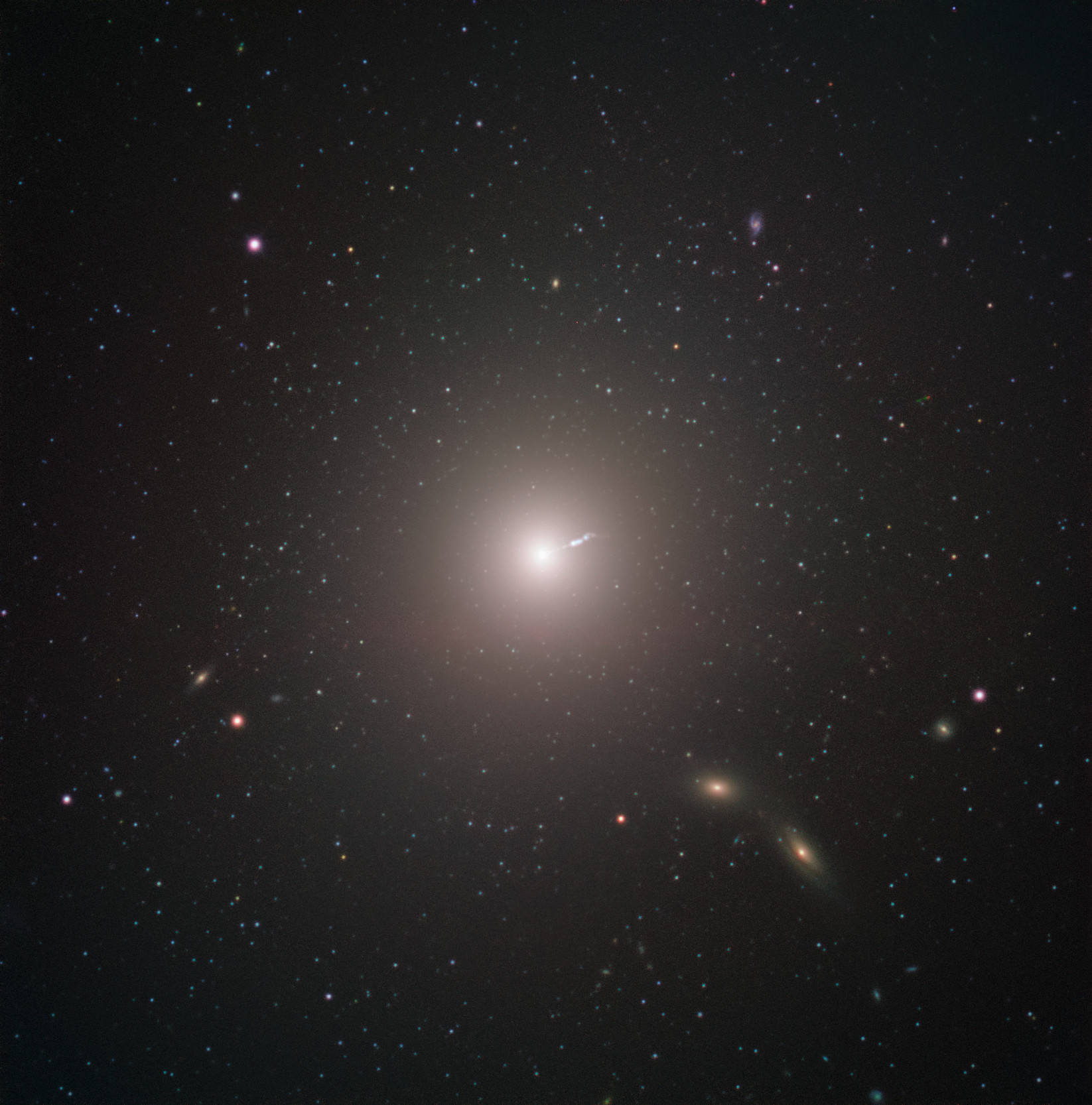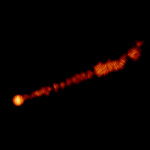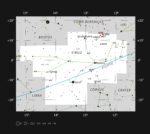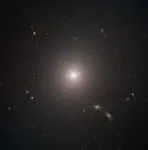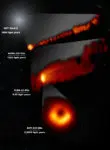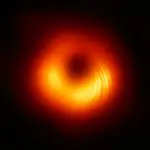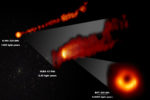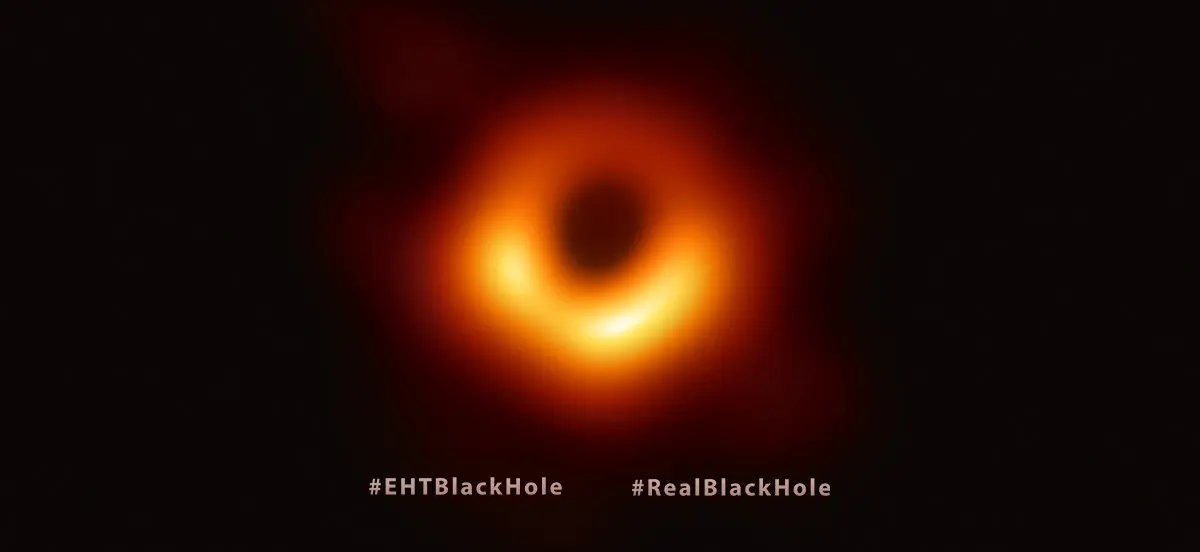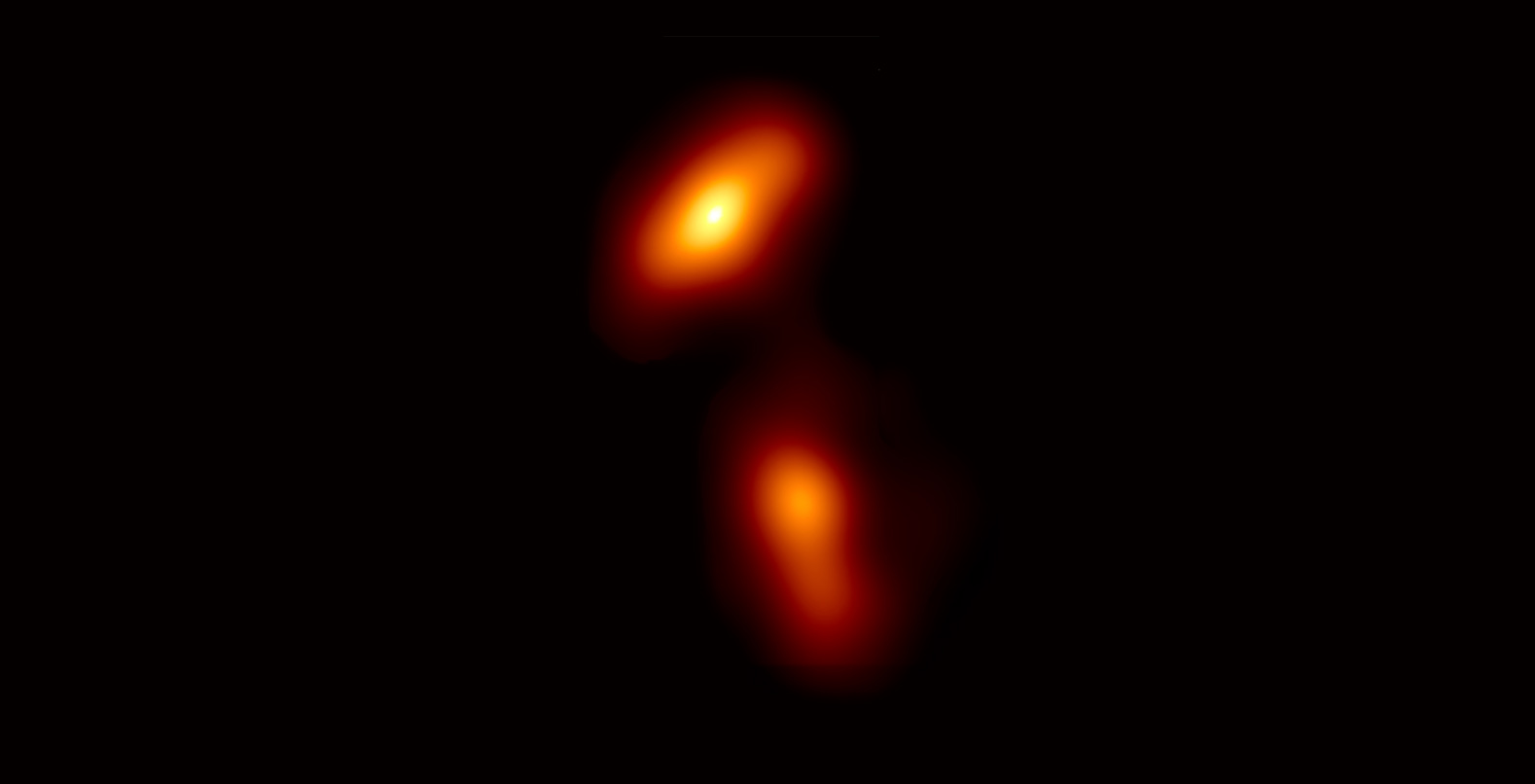Astronomers image magnetic fields at the edge of M87's black hole
24 March, 2021 / Read time: 16 minutes
Scientific PaperThe Event Horizon Telescope (EHT) collaboration, which produced the first-ever image of a black hole, has today revealed a new view of the massive object at the center of the Messier 87 (M87) galaxy: how it looks in polarised light. With this data, astronomers measured polarization, a signature of magnetic fields, for the first time this close to the edge of a black hole. The observations are key to explaining how the M87 galaxy, located 55 million light-years away, can launch energetic jets from its core.
"We are now seeing the next crucial piece of evidence to understand how magnetic fields behave around black holes, and how activity in this very compact region of space can drive powerful jets that extend far beyond the galaxy," says Monika Mościbrodzka, Coordinator of the EHT Polarimetry Working Group and Assistant Professor at Radboud University in the Netherlands.
On April 10, 2019, scientists released the first-ever image of a black hole, revealing a bright ring-like structure with a dark central region — the black hole's shadow. Since then, the EHT collaboration has delved deeper into the supermassive object's data at the heart of the M87 galaxy collected in 2017. They have discovered that a significant fraction of the light around the M87 black hole is polarized.
"This work is a major milestone: the polarisation of light carries information that allows us to understand better the physics behind the image we saw in April 2019, which was not possible before," explains Iván Martí-Vidal, also Coordinator of the EHT Polarimetry Working Group and GenT Distinguished Researcher at the University of Valencia, Spain. He adds that "unveiling this new polarised-light image required years of work due to the complex techniques involved in obtaining and analyzing the data."
Light becomes polarized when it goes through certain filters, like the lenses of polarized sunglasses, or when it is emitted in hot regions of space where magnetic fields are present. In the same way that polarized sunglasses help us see better by reducing reflections and glare from bright surfaces, astronomers can sharpen their view of the region around the black hole by looking at how the light originating from it is polarized. Specifically, polarization allows astronomers to map the magnetic field lines present at the inner edge of the black hole.
"The newly published polarised images are key to understanding how the magnetic field allows the black hole to 'eat' matter and launch powerful jets," says EHT collaboration member Andrew Chael, a NASA Hubble Fellow at the Princeton Center for Theoretical Science and the Princeton Gravity Initiative in the U.S.
The bright jets of energy and matter that emerge from M87's core and extend at least 5000 light-years from its center are one of the galaxy's most mysterious and energetic features. Most matter lying close to the edge of a black hole falls in. However, some of the surrounding particles escape moments before capture and are blown far out into space in the form of jets.
Astronomers have relied on different models of how matter behaves near the black hole to understand this process better. But they still don't know precisely how jets larger than the galaxy are launched from its central region, comparable in size to the Solar System, nor how exactly matter falls into the black hole. With the new EHT image of the black hole and its shadow in polarised light, astronomers managed for the first time to look into the region just outside the black hole where this interplay between matter flowing in and being ejected out is happening.
The observations provide new information about the structure of the magnetic fields just outside the black hole. The team found that only theoretical models featuring strongly magnetized gas can explain what they see at the event horizon.
"The observations suggest that the magnetic fields at the black hole's edge are strong enough to push back on the hot gas and help it resist gravity's pull. Only the gas that slips through the field can spiral inwards to the event horizon," explains Jason Dexter, Assistant Professor at the University of Colorado Boulder, U.S., and Coordinator of the EHT Theory Working Group.
To observe the heart of the M87 galaxy, the collaboration linked eight telescopes worldwide — including the northern Chile-based Atacama Large Millimeter/submillimeter Array (ALMA) — to create a virtual Earth-sized telescope, the EHT. The impressive resolution obtained with the EHT is equivalent to that needed to measure a credit card's length on the Moon's surface.
"With ALMA and APEX, which through their southern location enhance the image quality by adding geographical spread to the EHT network, European scientists were able to play a central role in the research," says Ciska Kemper, European ALMA Programme Scientist at ESO. "With its 66 antennas, ALMA dominates the overall signal collection in polarised light, while APEX has been essential for the calibration of the image."
"ALMA data were also crucial to calibrate, image and interpret the EHT observations, providing tight constraints on the theoretical models that explain how matter behaves near the black hole event horizon," adds Ciriaco Goddi, a scientist at Radboud University and Leiden Observatory, the Netherlands, who led an accompanying study that relied only on ALMA observations.
"ALMA plays a central role in the entire process: it is centrally located to tie the EHT array together, and it is also the most sensitive telescope in the array, so it is crucial to making the most of the EHT data," said Geoff Crew, Haystack Research Scientist. "In addition, the years of work on the ALMA polarimetry analysis has delivered far more than we imagined."
The EHT setup allowed the team to directly observe the black hole shadow and the ring of light around it, with the new polarised-light image clearly showing that the ring is magnetized. The results are published today in two separate papers in The Astrophysical Journal Letters by the EHT collaboration. The research involved over 300 researchers from multiple organizations and universities worldwide.
"The EHT is making rapid advancements, with technological upgrades being done to the network and new observatories being added. We expect future EHT observations to reveal more accurately the magnetic field structure around the black hole and to tell us more about the physics of the hot gas in this region," concludes EHT collaboration member Jongho Park, an East Asian Core Observatories Association Fellow at the Academia Sinica Institute of Astronomy and Astrophysics in Taipei.
Additional Information
This research was presented in two papers by the EHT collaboration published today in The Astrophysical Journal Letters: "First M87 Event Horizon Telescope Results VII: Polarization of the Ring" (DOI: 10.3847/2041-8213/abe71d) and "First M87 Event Horizon Telescope Results VIII: Magnetic Field Structure Near The Event Horizon" (DOI: 10.3847/2041-8213/abe4de). Accompanying research is presented in the paper "Polarimetric properties of Event Horizon Telescope targets from ALMA" (DOI: 10.3847/2041-8213/abee6a) by Goddi, Martí-Vidal, Messias, and the EHT collaboration, which has been accepted for publication in The Astrophysical Journal Letters.
The EHT collaboration involves more than 300 researchers from Africa, Asia, Europe, North and South America. The international collaboration is working to capture the most detailed black hole images ever obtained by creating a virtual Earth-sized telescope. Supported by considerable international investment, the EHT links existing telescopes using novel systems — creating a fundamentally new instrument with the highest angular resolving power that has yet been achieved.
The individual telescopes involved are: ALMA, APEX, the Institut de Radioastronomie Millimetrique (IRAM) 30-meter Telescope, the IRAM NOEMA Observatory, the James Clerk Maxwell Telescope (JCMT), the Large Millimeter Telescope (LMT), the Submillimeter Array (SMA), the Submillimeter Telescope (SMT), the South Pole Telescope (SPT), the Kitt Peak Telescope, and the Greenland Telescope (GLT).
The EHT consortium consists of 13 stakeholder institutes: the Academia Sinica Institute of Astronomy and Astrophysics, the University of Arizona, the University of Chicago, the East Asian Observatory, Goethe-Universitaet Frankfurt, Institut de Radioastronomie Millimétrique, Large Millimeter Telescope, Max Planck Institute for Radio Astronomy, MIT Haystack Observatory, National Astronomical Observatory of Japan, Perimeter Institute for Theoretical Physics, Radboud University and the Smithsonian Astrophysical Observatory.
The Atacama Large Millimeter/submillimeter Array (ALMA), an international astronomy facility, is a partnership of the European Organisation for Astronomical Research in the Southern Hemisphere (ESO), the U.S. National Science Foundation (NSF) and the National Institutes of Natural Sciences (NINS) of Japan in cooperation with the Republic of Chile. ALMA is funded by ESO on behalf of its Member States, by NSF in cooperation with the National Research Council of Canada (NRC) and the Ministry of Science and Technology (MOST) and by NINS in cooperation with the Academia Sinica (AS) in Taiwan and the Korea Astronomy and Space Science Institute (KASI).
ALMA construction and operations are led by ESO on behalf of its Member States; by the National Radio Astronomy Observatory (NRAO), managed by Associated Universities, Inc. (AUI), on behalf of North America; and by the National Astronomical Observatory of Japan (NAOJ) on behalf of East Asia. The Joint ALMA Observatory (JAO) provides the unified leadership and management of the construction, commissioning and operation of ALMA.
Images
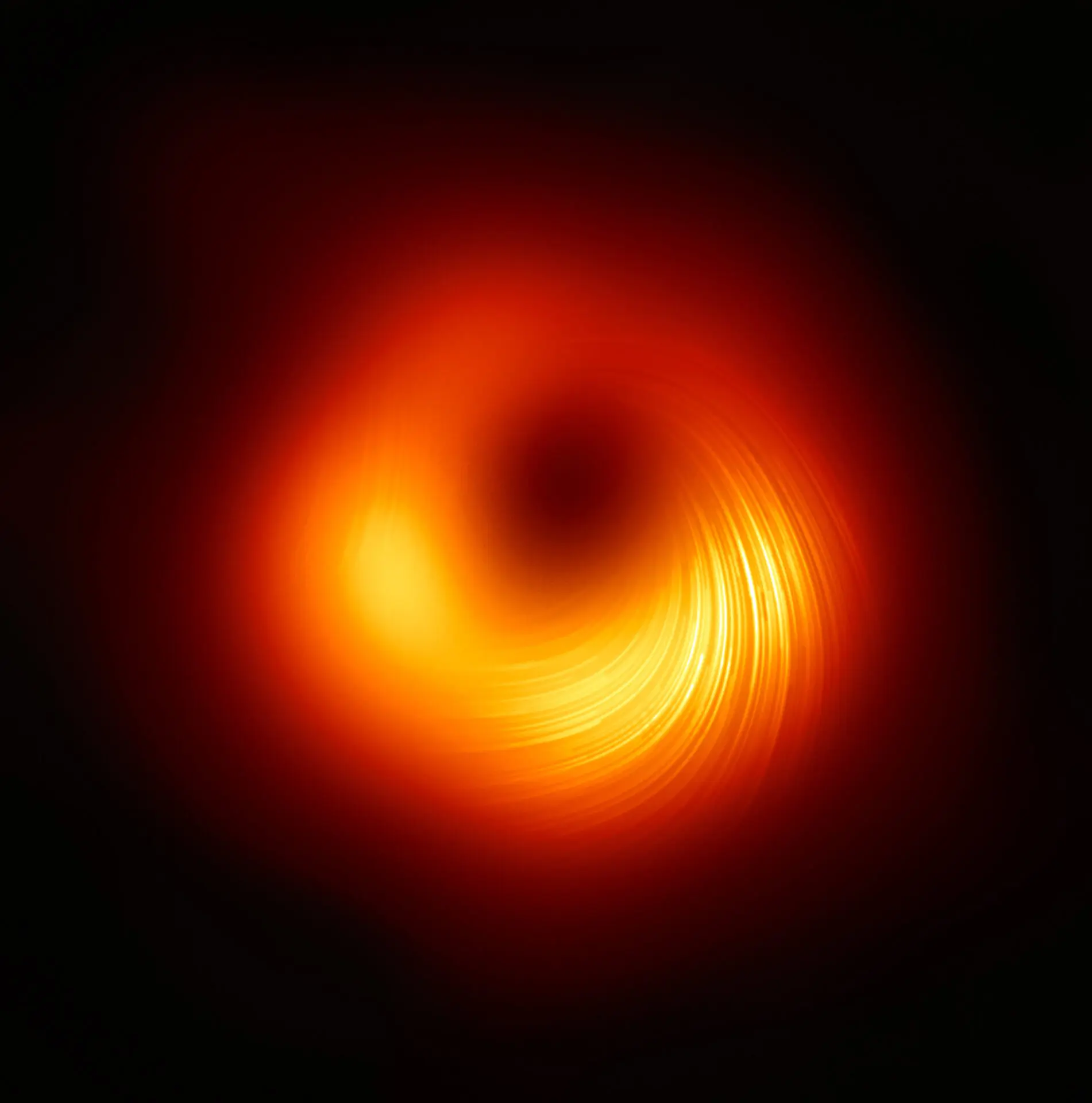
The Event Horizon Telescope (EHT) collaboration, who produced the first ever image of a black hole released in 2019, has today a new view of the massive object at the centre of the Messier 87 (M87) galaxy: how it looks in polarised light. This is the first time astronomers have been able to measure polarisation, a signature of magnetic fields, this close to the edge of a black hole.
This image shows the polarised view of the black hole in M87. The lines mark the orientation of polarisation, which is related to the magnetic field around the shadow of the black hole. Credit: EHT Collaboration
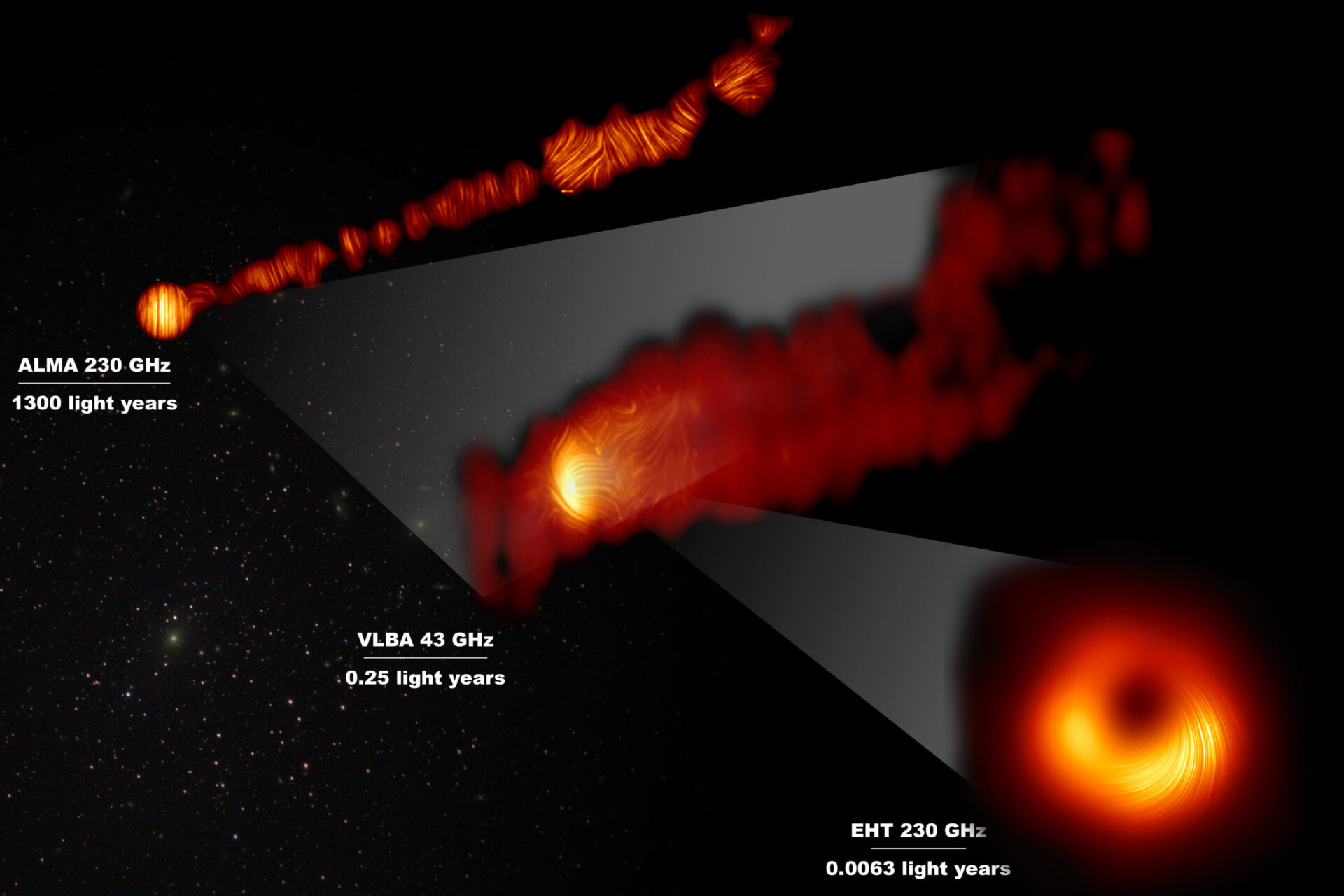
This composite image shows three views of the central region of the Messier 87 (M87) galaxy in polarised light. The galaxy has a supermassive black hole at its centre and is famous for its jets, that extend far beyond the galaxy. One of the polarised-light images, obtained with ALMA shows part of the jet in polarised light. This image captures the part of the jet, with a size of 6000 light years, closer to the centre of the galaxy. The other polarised light images zoom in closer to the supermassive black hole: the middle view covers a region about one light year in size and was obtained with the National Radio Astronomy Observatory’s Very Long Baseline Array (VLBA) in the US. The most zoomed-in view was obtained by linking eight telescopes around the world to create a virtual Earth-sized telescope, the Event Horizon Telescope or EHT. This allows astronomers to see very close to the supermassive black hole, into the region where the jets are launched. The lines mark the orientation of polarisation, which is related to the magnetic field in the regions imaged.The ALMA data provides a description of the magnetic field structure along the jet. Therefore the combined information from the EHT and ALMA allows astronomers to investigate the role of magnetic fields from the vicinity of the event horizon (as probed with the EHT on light-day scales) to far beyond the M87 galaxy along its powerful jets (as probed with ALMA on scales of thousand of light-years). The values in GHz refer to the frequencies of light at which the different observations were made. The horizontal lines show the scale (in light years) of each of the individual images. Credit: EHT Collaboration; ALMA (ESO/NAOJ/NRAO), Goddi et al.; VLBA (NRAO), Kravchenko et al.; J. C. Algaba, I. Martí-Vidal
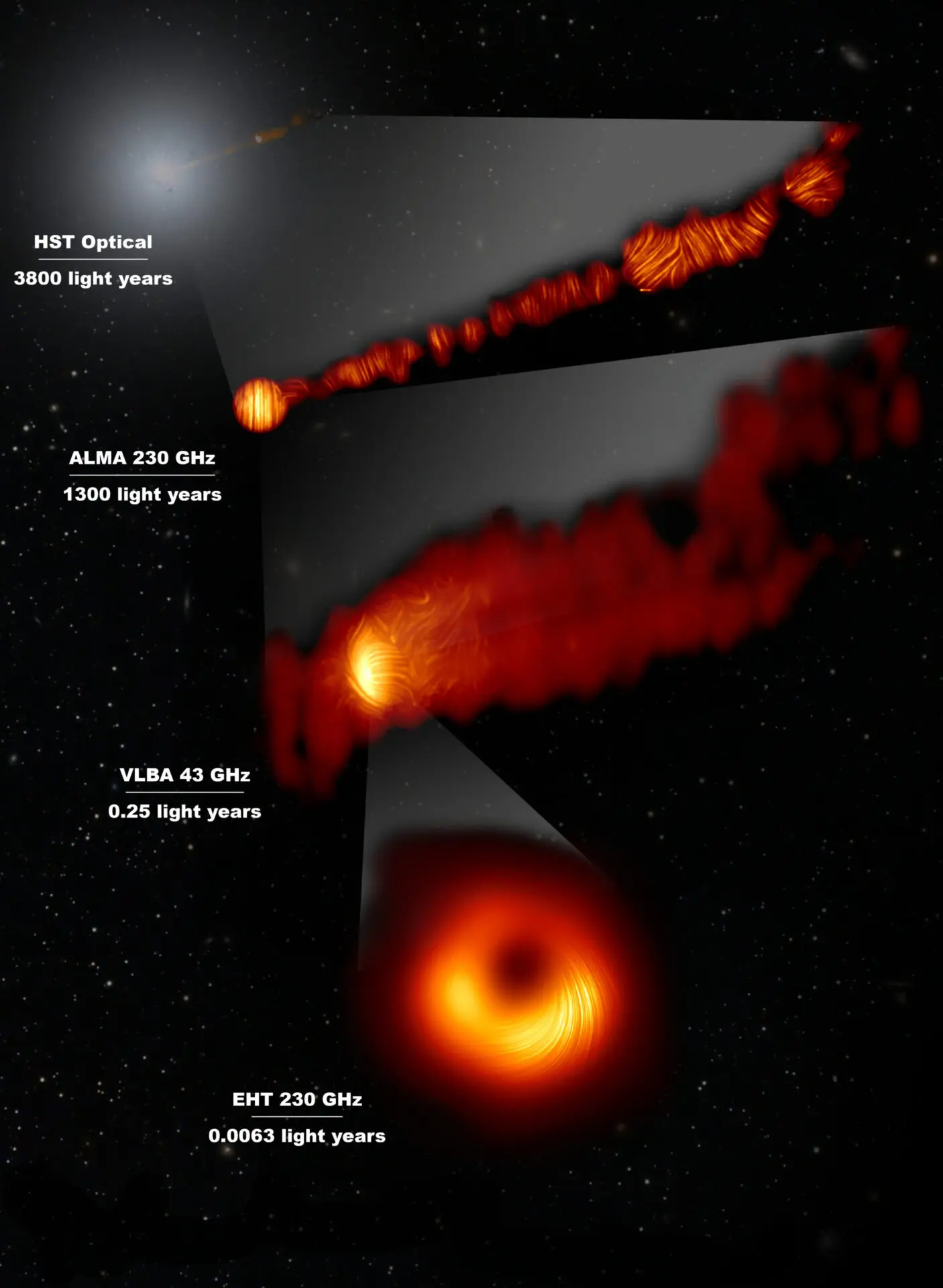
This composite image shows three views of the central region of the Messier 87 (M87) galaxy in polarised light and one view, in the visible wavelength, taken with the Hubble Space Telescope. The galaxy has a supermassive black hole at its centre and is famous for its jets, that extend far beyond the galaxy. The Hubble image at the top captures a part of the jet some 6000 light years in size.
One of the polarised-light images, obtained with obtained with ALMA shows part of the jet in polarised light. This image captures the part of the jet, with a size of 6000 light years, closer to the centre of the galaxy.
The other polarised light images zoom in closer to the supermassive black hole: the middle view covers a region about one light year in size and was obtained with the National Radio Astronomy Observatory’s Very Long Baseline Array (VLBA) in the US.
The most zoomed-in view was obtained by linking eight telescopes around the world to create a virtual Earth-sized telescope, the Event Horizon Telescope or EHT. This allows astronomers to see very close to the supermassive black hole, into the region where the jets are launched.
The lines mark the orientation of polarisation, which is related to the magnetic field in the regions imaged. The ALMA data provides a description of the magnetic field structure along the jet. Therefore the combined information from the EHT and ALMA allows astronomers to investigate the role of magnetic fields from the vicinity of the event horizon (as probed with the EHT on light-day scales) to far beyond the M87 galaxy along its powerful jets (as probed with ALMA on scales of thousand of light-years).
The values in GHz refer to the frequencies of light at which the different observations were made. The horizontal lines show the scale (in light years) of each of the individual images. Credit: EHT Collaboration; ALMA (ESO/NAOJ/NRAO), Goddi et al.; NASA, ESA and the Hubble Heritage Team (STScI/AURA); VLBA (NRAO), Kravchenko et al.; J. C. Algaba, I. Martí-Vidal
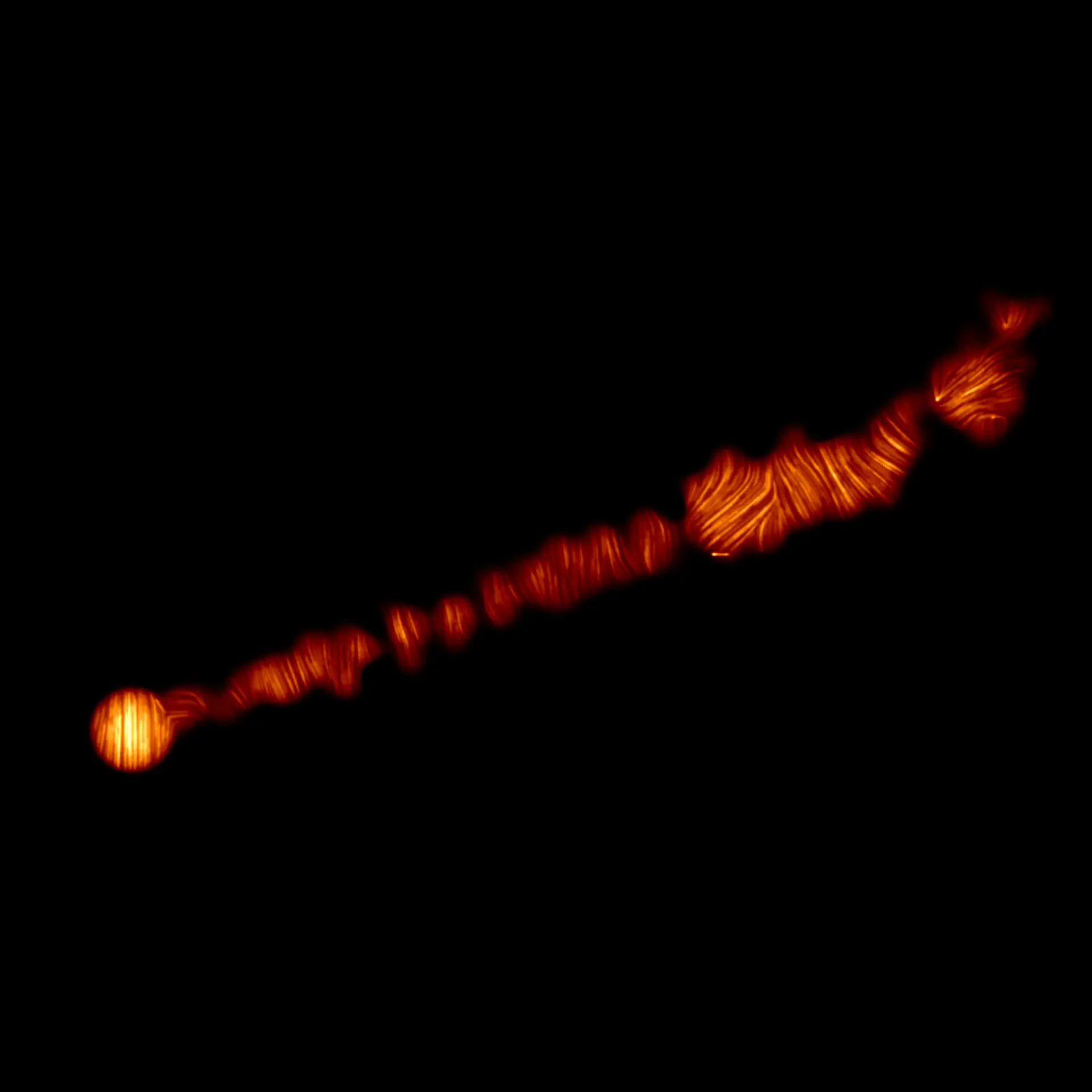
This image shows a view of the jet in the Messier 87 (M87) galaxy in polarised light. The image was obtained with ALMA and captures the part of the jet, with a size of 6000 light years, closer to the centre of the galaxy. The lines mark the orientation of polarisation, which is related to the magnetic field in the region imaged. This ALMA image therefore indicates what the structure of the magnetic field along the jet looks like.
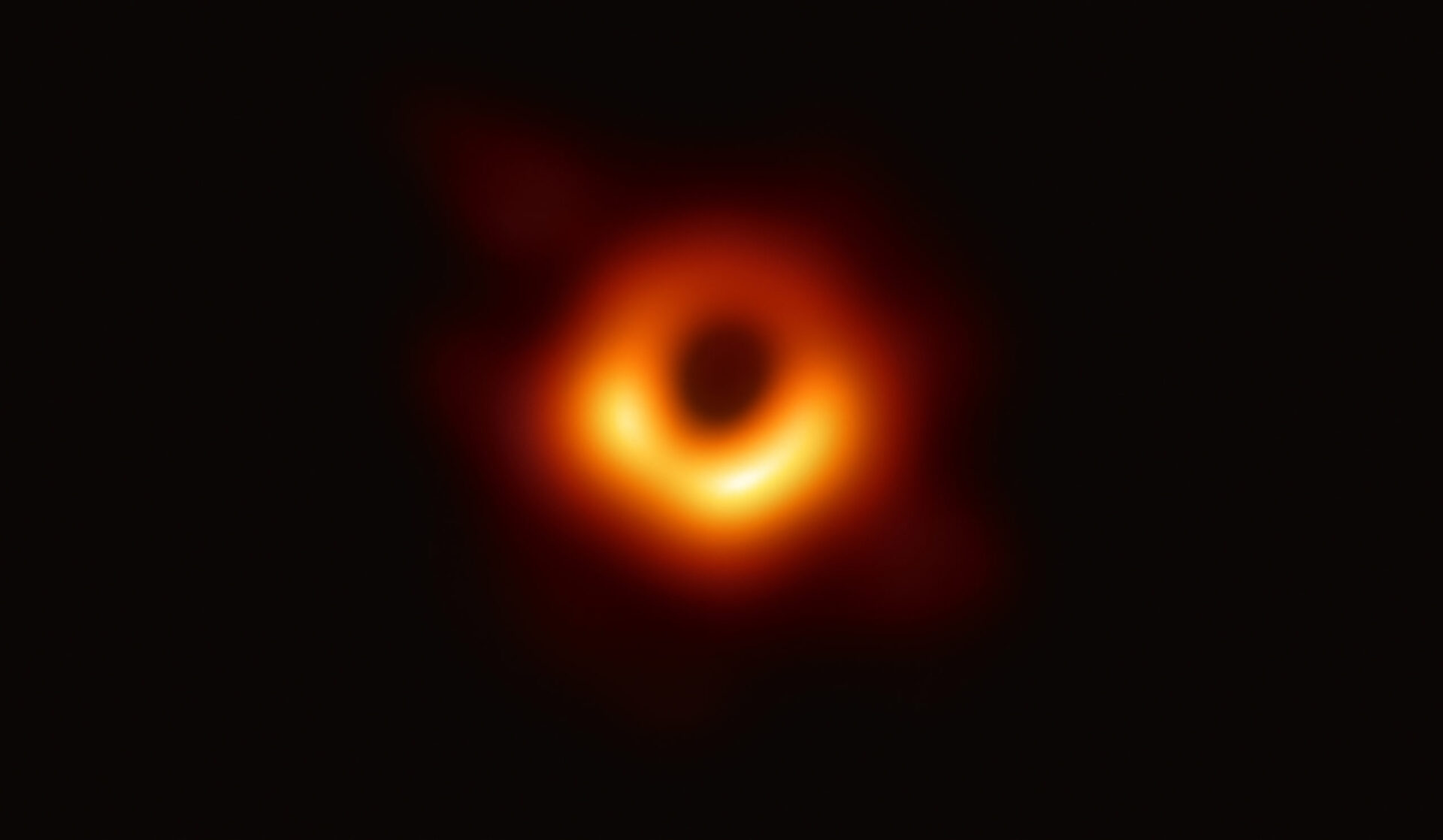
The Event Horizon Telescope (EHT) — a planet-scale array of eight ground-based radio telescopes forged through international collaboration — was designed to capture images of a black hole. In coordinated press conferences across the globe, EHT researchers revealed that they succeeded, unveiling the first direct visual evidence of the supermassive black hole in the centre of Messier 87 and its shadow. The shadow of a black hole seen here is the closest we can come to an image of the black hole itself, a completely dark object from which light cannot escape. The black hole’s boundary — the event horizon from which the EHT takes its name — is around 2.5 times smaller than the shadow it casts and measures just under 40 billion km across. While this may sound large, this ring is only about 40 microarcseconds across — equivalent to measuring the length of a credit card on the surface of the Moon. Although the telescopes making up the EHT are not physically connected, they are able to synchronize their recorded data with atomic clocks — hydrogen masers — which precisely time their observations. These observations were collected at a wavelength of 1.3 mm during a 2017 global campaign. Each telescope of the EHT produced enormous amounts of data – roughly 350 terabytes per day – which was stored on high-performance helium-filled hard drives. These data were flown to highly specialised supercomputers — known as correlators — at the Max Planck Institute for Radio Astronomy and MIT Haystack Observatory to be combined. They were then painstakingly converted into an image using novel computational tools developed by the collaboration. Credit: EHT Collaboration
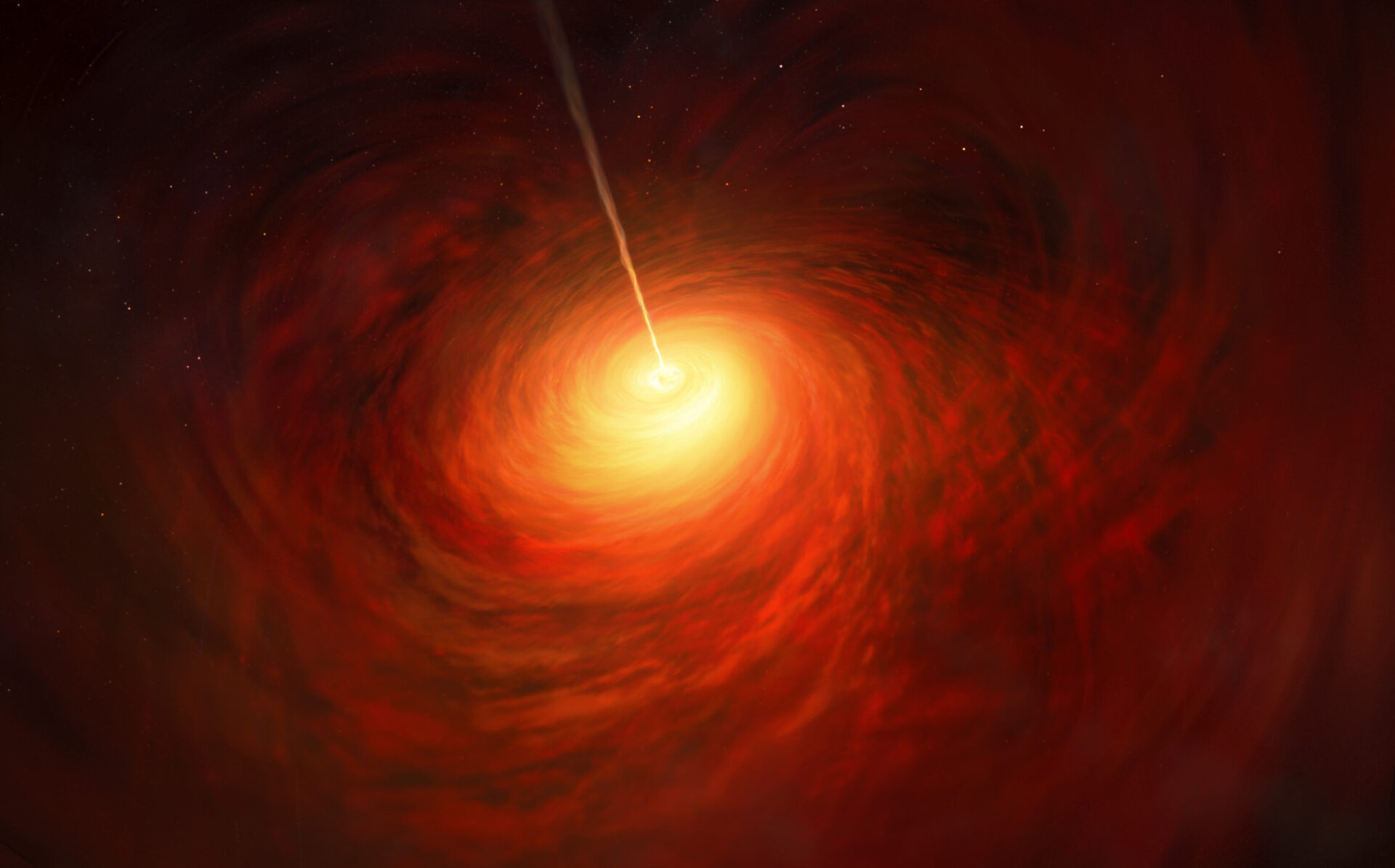
This artist’s impression depicts the black hole at the heart of the enormous elliptical galaxy Messier 87 (M87). This black hole was chosen as the object of paradigm-shifting observations by the Event Horizon Telescope. The superheated material surrounding the black hole is shown, as is the relativistic jet launched by M87’s black hole. Credit: ESO/M. Kornmesser
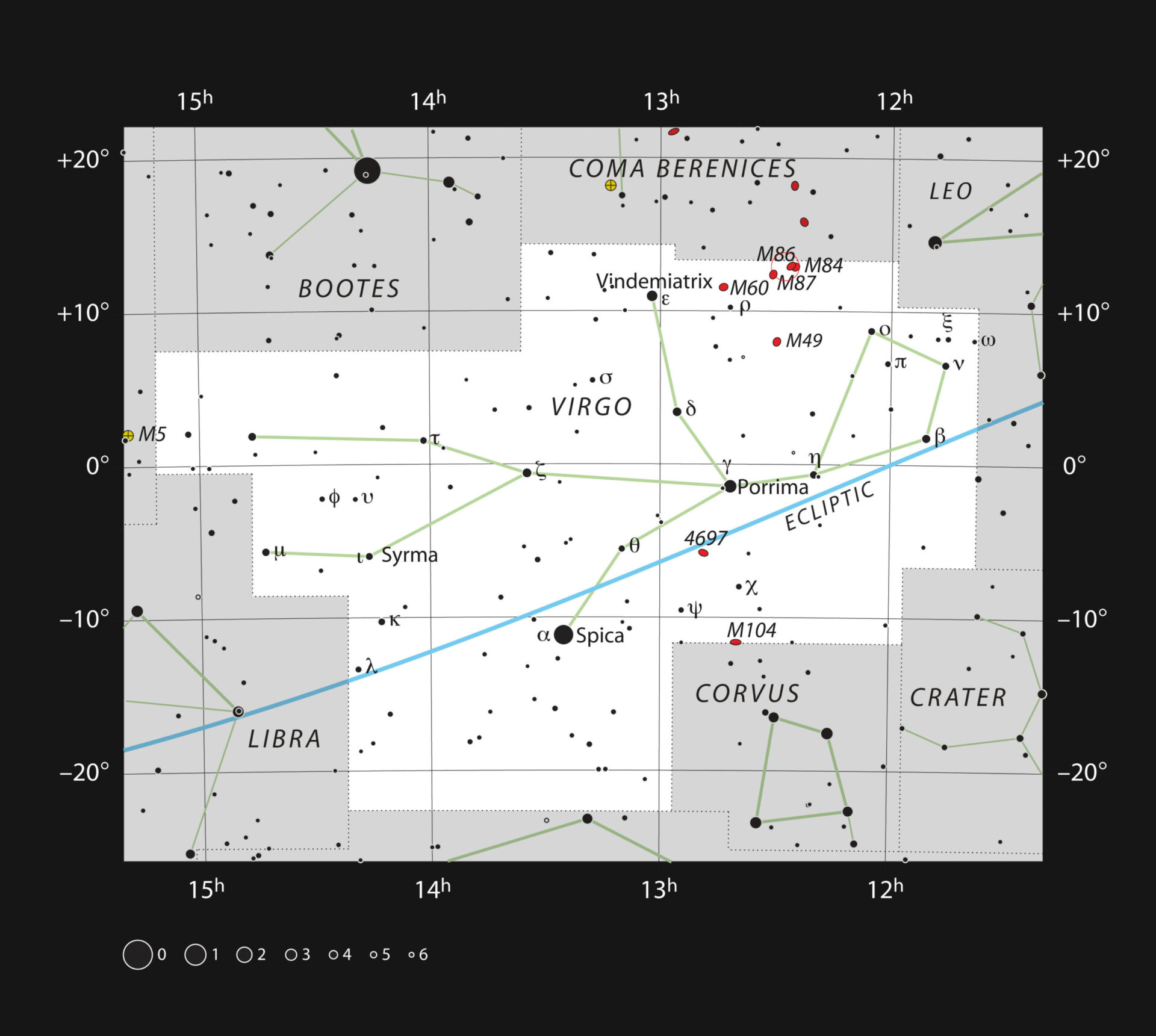
This chart shows the position of giant galaxy Messier 87 in the constellation of Virgo (The Virgin). The map shows most of the stars visible to the unaided eye under good conditions. Credit: ESO, IAU and Sky & Telescope
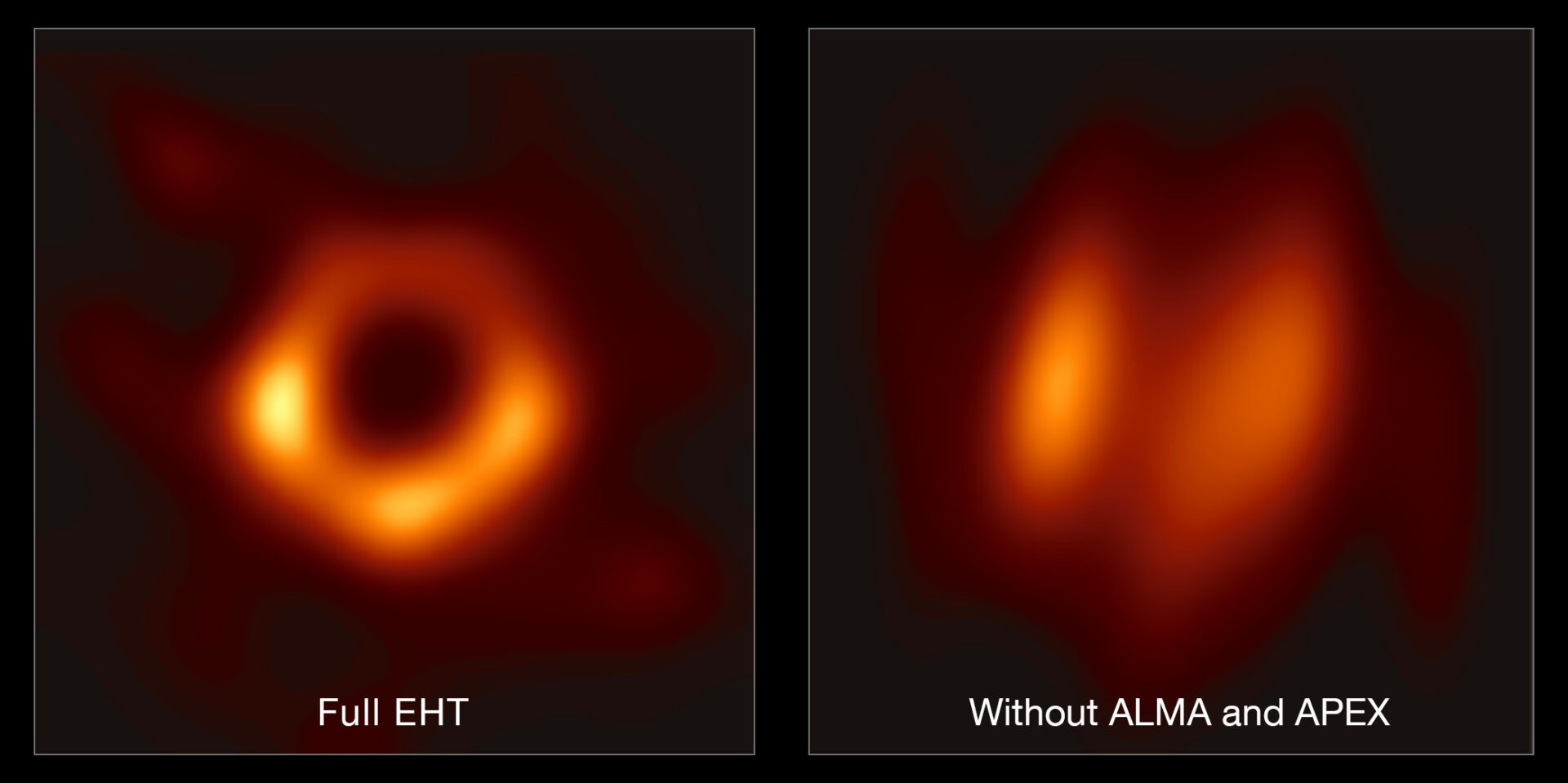
This image shows the contribution of ALMA and APEX to the EHT. The left hand image shows a reconstruction of the black hole image using the full array of the Event Horizon Telescope (including ALMA and APEX); the right-hand image shows what the reconstruction would look like without data from ALMA and APEX. The difference clearly shows the crucial role that ALMA and APEX played in the observations. Credit: EHT Collaboration
Videos
The Event Horizon Telescope (EHT) collaboration, who produced the first ever image of a black hole, has today revealed a new view of the massive object at the centre of the Messier 87 galaxy: how it looks in polarised light. This is the first time astronomers have been able to measure polarisation, a signature of magnetic fields, this close to the edge of a black hole. This video summarises the discovery.
Credit: ESO
This zoom video starts with a view of ALMA, a telescope in which ESO is a partner and that is part of the Event Horizon Telescope, and zooms-in on the heart of M87, showing successively more detailed observations. At the end of the video, we see the first ever image of a black hole — first released in 2019 — followed by a new image released in 2021: how this supermassive object looks in polarised light. This is the first time astronomers have been able to measure polarisation, a signature of magnetic fields, this close to the edge of a black hole.
Credit: ESO/L. Calçada, Digitized Sky Survey 2, ESA/Hubble, RadioAstron, De Gasperin et al., Kim et al., EHT Collaboration. Music: Niklas Falcke
Contacts
-
Nicolás Lira
Education and Public Outreach Coordinator
Joint ALMA Observatory, Santiago - Chile
Phone: +56 2 2467 6519
Cel: +56 9 9445 7726
Email: [email protected]
-
Bárbara Ferreira
-
Dave Finley
Public Information Officer
Karl G. Jansky Very Large Array (VLA)
Phone: 1 575.835-7302
Email: [email protected]
-
Masaaki Hiramatsu
Education and Public Outreach Officer, NAOJ Chile
Observatory, Tokyo - Japan
Phone: +81 422 34 3630
Email: [email protected]
